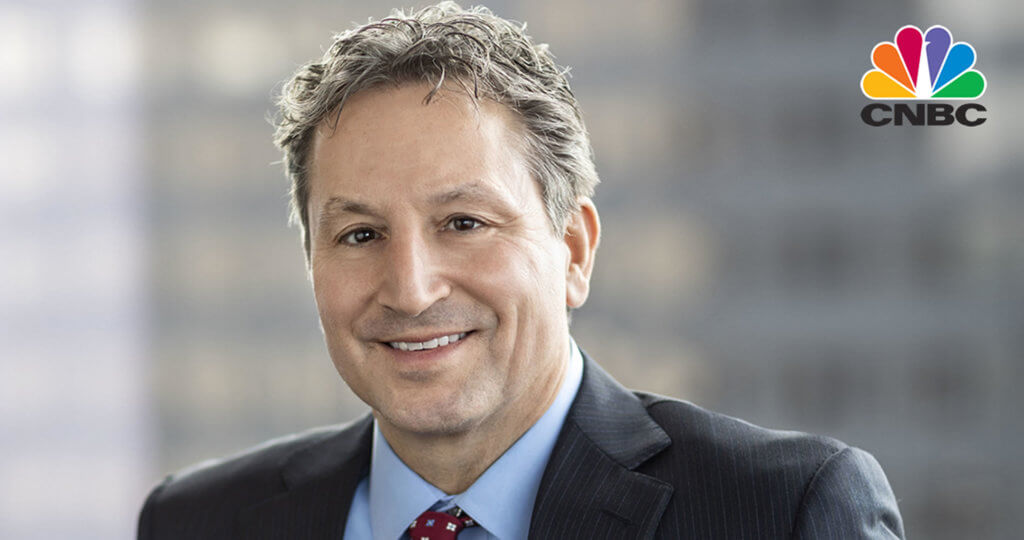Oakmark International Fund – Investor Class
Average Annual Total Returns 09/30/20
Since Inception 09/30/92 8.26%
10-year 4.10%
5-year 2.25%
1-year -11.37%
3-month 3.64%
Gross Expense Ratio as of 09/30/19 was 1.03%
Net Expense Ratio as of 09/30/19 was 0.98%
The net expense ratio reflects a contractual advisory fee waiver agreement through January 27, 2021.
Past performance is no guarantee of future results. The performance data quoted represents past performance. Current performance may be lower or higher than the performance data quoted. The investment return and principal value vary so that an investor’s shares when redeemed may be worth more or less than the original cost. The To obtain the most recent month-end performance data, view it here.
Oakmark International Fund declined 11.4% for the fiscal year ended September 30, 2020, underperforming the MSCI World ex U.S. Index, which was nearly flat over the same period. For the most recent quarter, the Fund returned 3.6%, compared to the benchmark’s return of 4.9%. However, the Fund has returned an average of 8.3% per year since its inception in September 1992, outperforming the MSCI World ex U.S. Index, which has averaged 5.6% per year over the same period. We are disappointed any time we report absolute or relative underperformance, but we believe the portfolio is well positioned to provide you, our shareholders, with attractive returns in the long term.
NAVER, an internet company based in South Korea, was the largest contributor during the fiscal year. Over the past year, the company has generated strong operating results while management has completed several corporate actions that have significantly added value. Operationally, NAVER has produced strong revenue growth in all of its key businesses, including search, e-commerce, fintech and content services while also maintaining healthy margins. In addition, the company recently received regulatory approval to merge its Japanese subsidiary, Line Corp, with Yahoo Japan (Z Holdings). This combination will create one of the largest internet companies in Japan and we are optimistic about its long-term prospects. NAVER also spun out its financial technology business, NAVER Financial, and received a sizable investment from an outside party. We expect this business to generate strong revenue growth in the coming years and to be among the leaders in South Korea’s fintech industry. With healthy growth, improving profitability and strong market positions across most of its businesses, NAVER remains an attractive holding, in our view.
Daimler, a global luxury automotive and truck manufacturer based in Germany, was the largest contributor for the quarter. Considering the operating environment, we were happy with the company’s second-quarter earnings results, specifically in Mercedes-Benz cars and vans. However, year to date, Mercedes-Benz cars’ and vans’ volumes are down 22% and 29%, respectively, but we appreciate that revenue in the segment is only down 14.8%. We think this reflects significant product mix benefits within both markets as well as resilient pricing dynamics. China also contributed to Daimler’s solid performance, delivering 17% year-over-year growth, even though the overall Chinese auto market was down 4%. Free cash flow was also significantly stronger than had been expected, which we attribute to management’s stringent focus on this metric. As a result, the company ended the second quarter with a strong net financial position. Daimler also provided earnings guidance that was better than had been expected. We believe these results reflect well on the new management team. During the quarter, Daimler announced that it reached an agreement in principle with various U.S. authorities to settle civil and environmental claims regarding emissions control systems on about 250,000 diesel passenger cars and vans in the U.S. The company also reached an agreement with the plaintiffs’ counsel to settle the ongoing class action lawsuit. Importantly, the costs associated with the settlements are covered by existing provisions and removes a material area of uncertainty for Daimler.
Rolls-Royce Holdings, the U.K.-based producer of engines for the aerospace, defense and power markets, detracted the most from performance for both the fiscal year and most recent quarter. We wrote extensively about Rolls-Royce in our last quarterly letter and continue to believe that Covid-19 will cause a material and long-lasting disruption to its civil business. However, we also believe the company’s other businesses, namely power systems and defense, offer significant value and have been much less disrupted by Covid-19. The company’s share price weakness implies that all of its businesses have declined as much in value as the civil business, which we believe is not the case. We would note that after the close of the quarter, Rolls-Royce announced a GBP 2 billion rights issue as part of a GBP 5 billion recapitalization package that will strengthen its balance sheet and ensure adequate liquidity even if flight hours increase only moderately in 2021.
Another large detractor from performance for the most recent quarter and fiscal year was Lloyds Banking Group, a dominant retail bank in the U.K. The company’s fiscal-year results fell short of expectations as revenue fell 4%, underlying profit fell 7% and pre-provision profit declined 3% from a year earlier. Results were also weaker than our estimates, which we attributed to 2019’s very difficult operating environment, one that was dominated by uncertainty surrounding Brexit and the formation of a U.K. government. The company’s results for the first half of 2020 were also disappointing. Key metrics fell far short of our estimates primarily because of Covid-19. Total revenue from core operations declined 16% from a year ago and operating profit realized a loss of GBP 281 million, driven by a significant impairment provision charge. Management stated that the larger than anticipated provision amount was due to a significantly depressed economic outlook. However, Lloyds loan book continues to perform well and actual defaults to date remain stable. Despite the difficult operating environment, Lloyds is well capitalized. Its Tier 1 ratio is 14.6% and it holds GBP 11.8 billion more in excess capital than regulations require. We believe that Lloyds has the preeminent retail banking franchise in a consolidated U.K. market and its balance sheet has improved greatly in recent years, possessing strong levels of capital, liquidity and reserves. In our view, the management team has successfully simplified the business and achieved significant cost savings from capitalizing on acquisition synergies, reducing headcounts, deploying technology improvements and decreasing its number of branches. This simplification plan has contributed to a cost-to-income ratio that is largely in line with our estimates, despite continued pressures from low interest rates. In our view, Lloyds possesses a wide range of strengths that it can draw on to reinforce its business during current near-term challenges. Overall, we find that Lloyds is trading at a large discount to our estimate of the company’s intrinsic value and that it remains an attractive investment.
During the quarter, we sold our holdings of Kuehne + Nagel (Switzerland), Nestlé (Switzerland), Reckitt Benckiser Group (U.K.) and Taiwan Semiconductor (Taiwan) as they approached our estimates of intrinsic value. We initiated positions in Anheuser-Busch InBev (Belgium), the world’s largest brewing company and owners of brands such as Budweiser, Corona, Michelob and Stella Artois; Fresenius Medical Care (Germany), the largest global provider of dialysis services and products; and Novartis (Switzerland), one of the leading branded global pharmaceutical companies.
We continue to believe the Swiss franc is overvalued versus the U.S. dollar. As a result, we defensively hedged a portion of the Fund’s exposure. Approximately 13% of the Swiss franc exposure was hedged at quarter end.
Geographically, we ended the quarter with approximately 82% of our holdings in Europe and the U.K., 9% in Asia, and 3% in Australasia. The remaining positions are 2% in South Africa, 2% in North America (Canada and the U.S.) and 1% in Latin America (Mexico).
We thank you for your continued support.
The securities mentioned above comprise the following percentages of the Oakmark International Fund’s total net assets as of 09/30/20: Anheuser-Busch InBev 0.9%, Daimler 3.9%, Fresenius Medical Care 0.9%, Kuehne + Nagel 0%, Line Corp 0%, Lloyds Banking Group 4.0%, NAVER 1.0%, Nestlé 0%, Novartis 0.5%, Reckitt Benckiser Group 0%, Rolls-Royce Holdings 0.7%, Taiwan Semiconductor 0% and Yahoo Japan 0%. Portfolio holdings are subject to change without notice and are not intended as recommendations of individual stocks.
The MSCI World ex U.S. Index (Net) is a free float-adjusted, market capitalization-weighted index that is designed to measure international developed market equity performance, excluding the U.S. The index covers approximately 85% of the free float-adjusted market capitalization in each country. This benchmark calculates reinvested dividends net of withholding taxes. This index is unmanaged and investors cannot invest directly in this index.
The Fund’s portfolio tends to be invested in a relatively small number of stocks. As a result, the appreciation or depreciation of any one security held by the Fund will have a greater impact on the Fund’s net asset value than it would if the Fund invested in a larger number of securities. Although that strategy has the potential to generate attractive returns over time, it also increases the Fund’s volatility.
Investing in foreign securities presents risks that in some ways may be greater than U.S. investments. Those risks include: currency fluctuation; different regulation, accounting standards, trading practices and levels of available information; generally higher transaction costs; and political risks.
The percentages of hedge exposure for each foreign currency are calculated by dividing the market value of all same-currency forward contracts by the market value of the underlying equity exposure to that currency.
The information, data, analyses, and opinions presented herein (including current investment themes, the portfolio managers’ research and investment process, and portfolio characteristics) are for informational purposes only and represent the investments and views of the portfolio managers and Harris Associates L.P. as of the date written and are subject to change and may change based on market and other conditions and without notice. This content is not a recommendation of or an offer to buy or sell a security and is not warranted to be correct, complete or accurate.
Certain comments herein are based on current expectations and are considered “forward-looking statements”. These forward looking statements reflect assumptions and analyses made by the portfolio managers and Harris Associates L.P. based on their experience and perception of historical trends, current conditions, expected future developments, and other factors they believe are relevant. Actual future results are subject to a number of investment and other risks and may prove to be different from expectations. Readers are cautioned not to place undue reliance on the forward-looking statements.
All information provided is as of 09/30/2020 unless otherwise specified.







